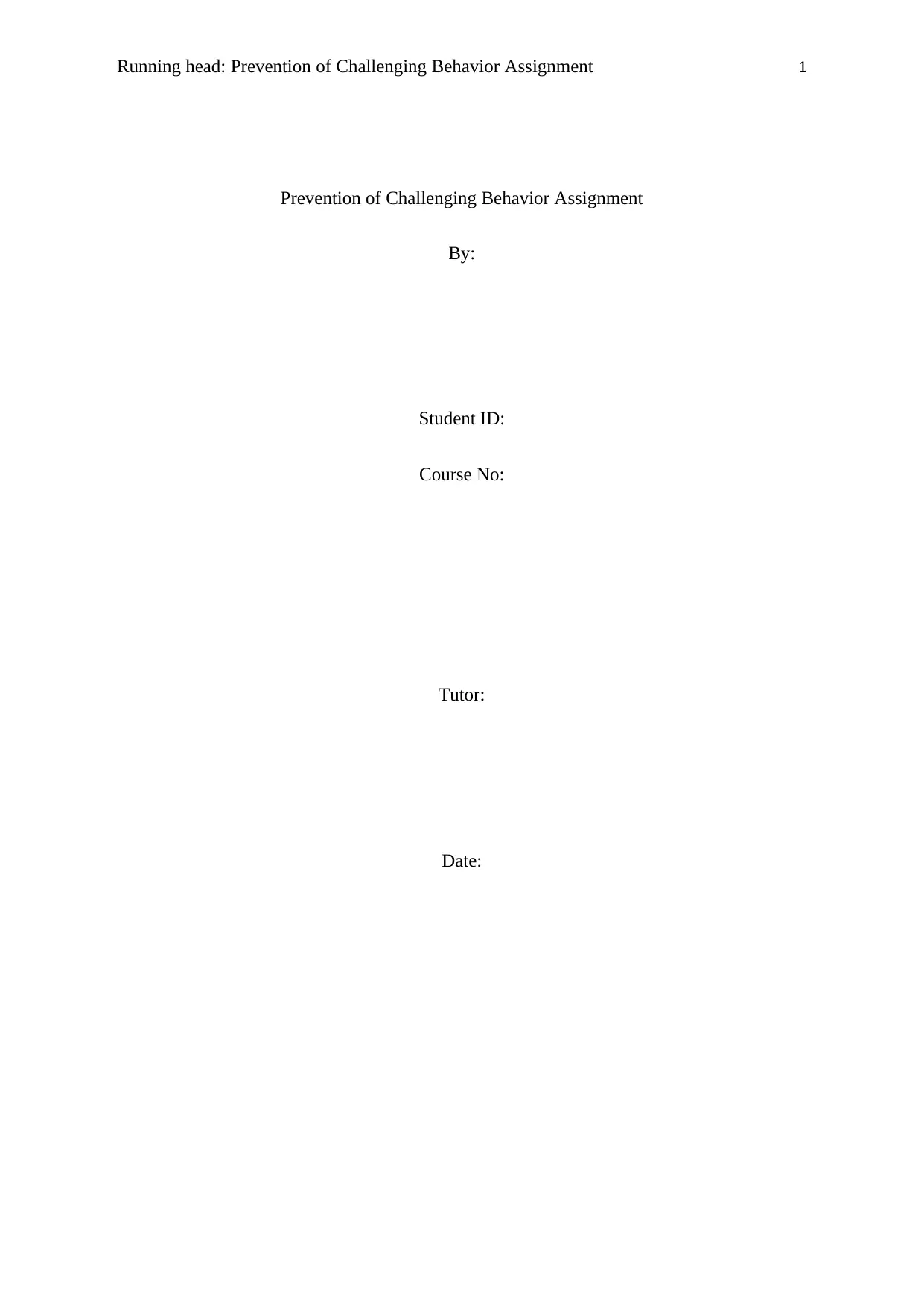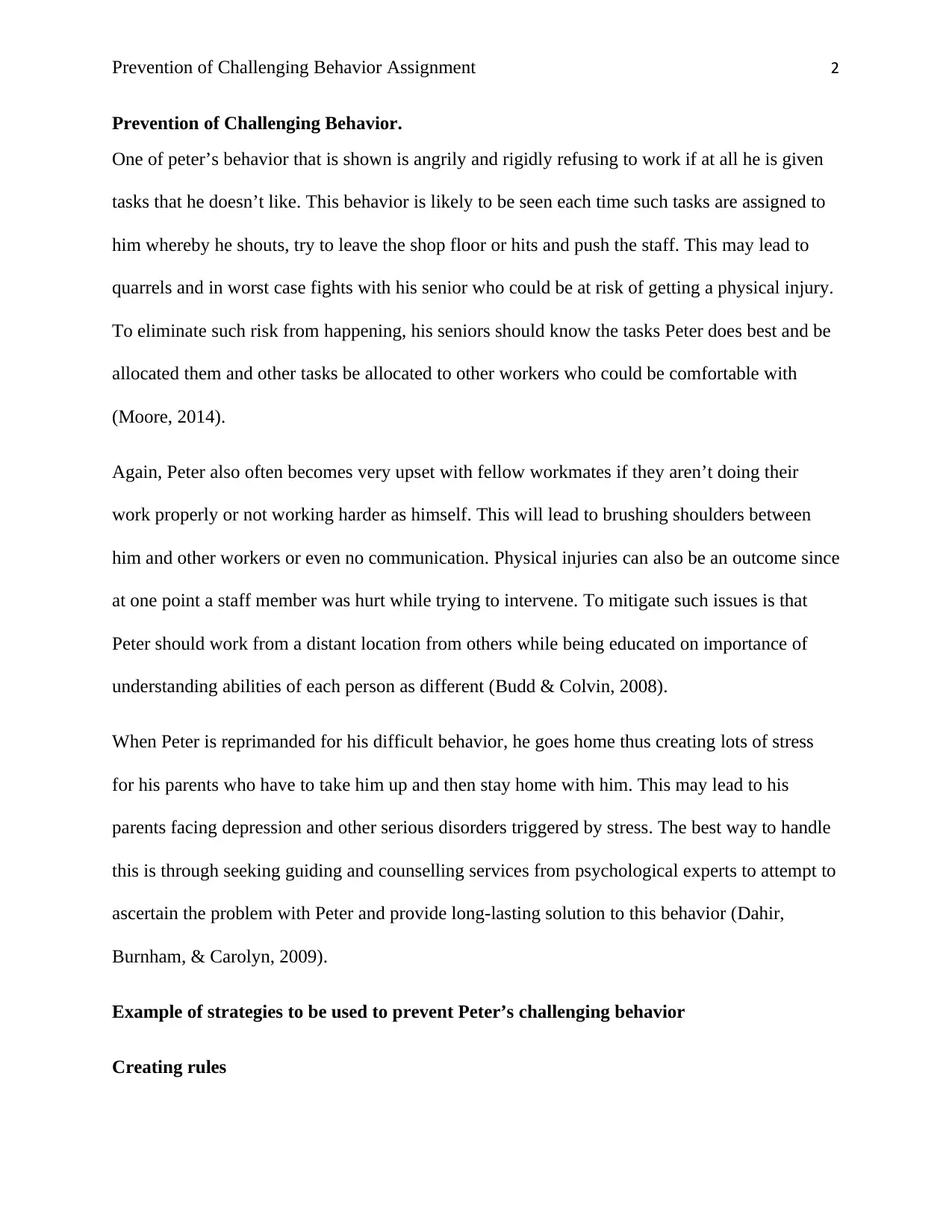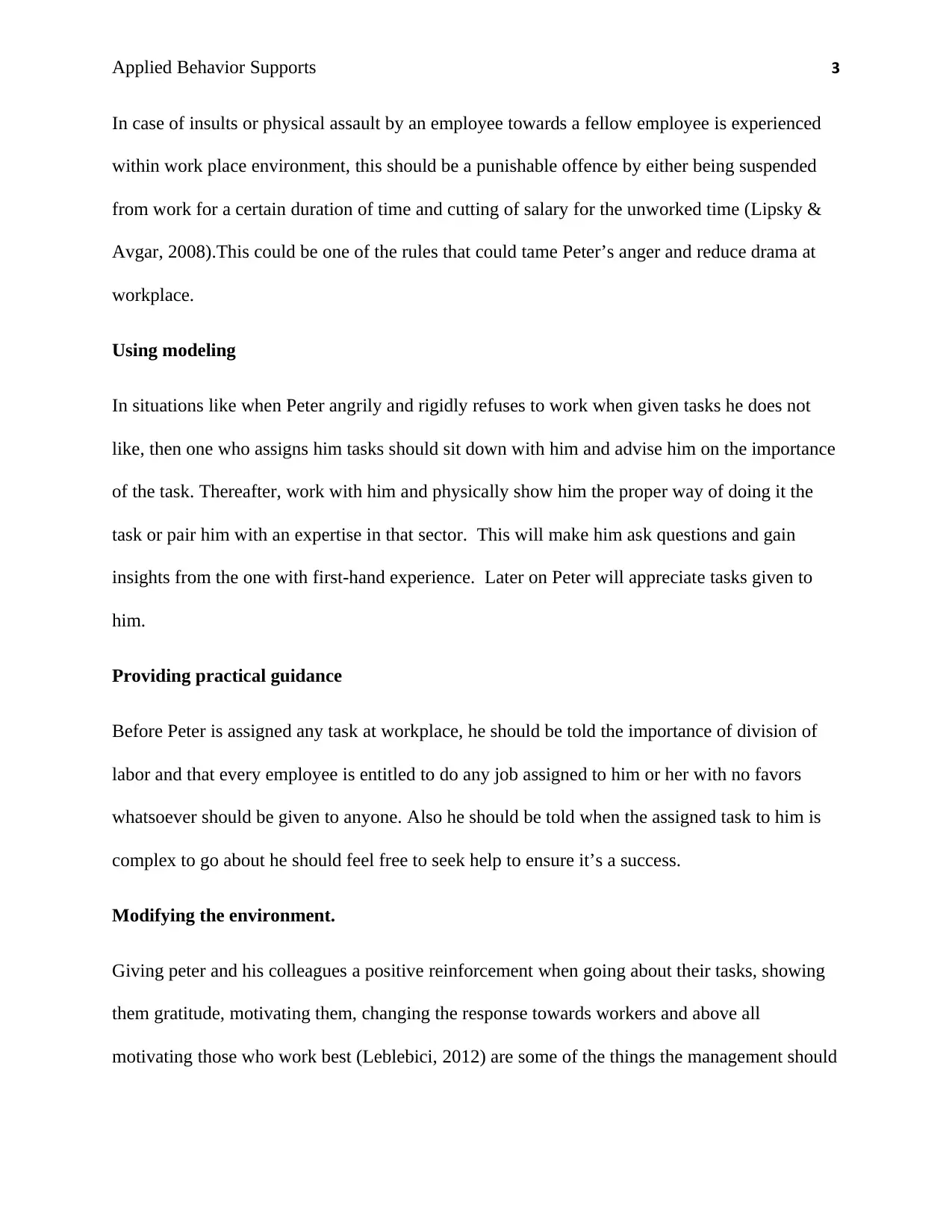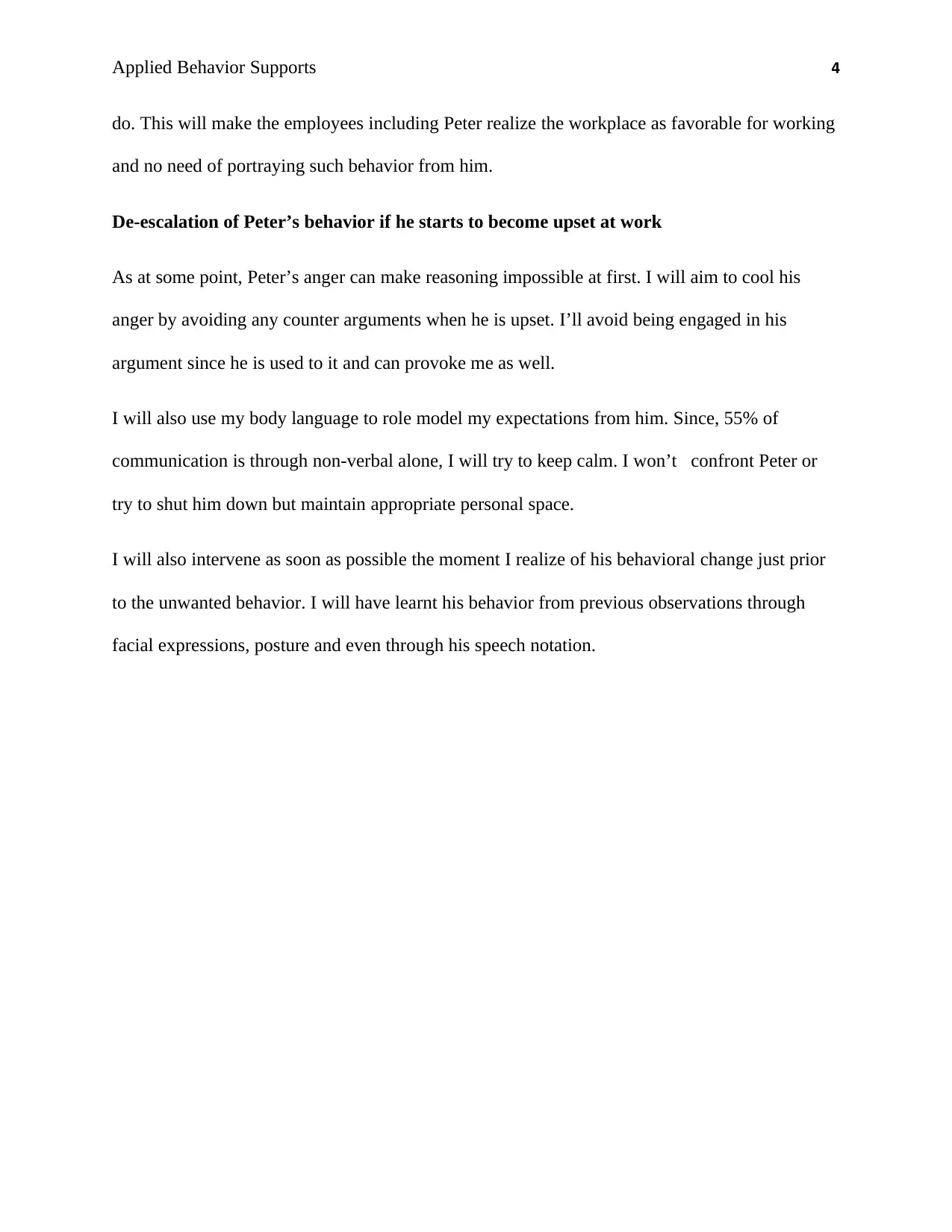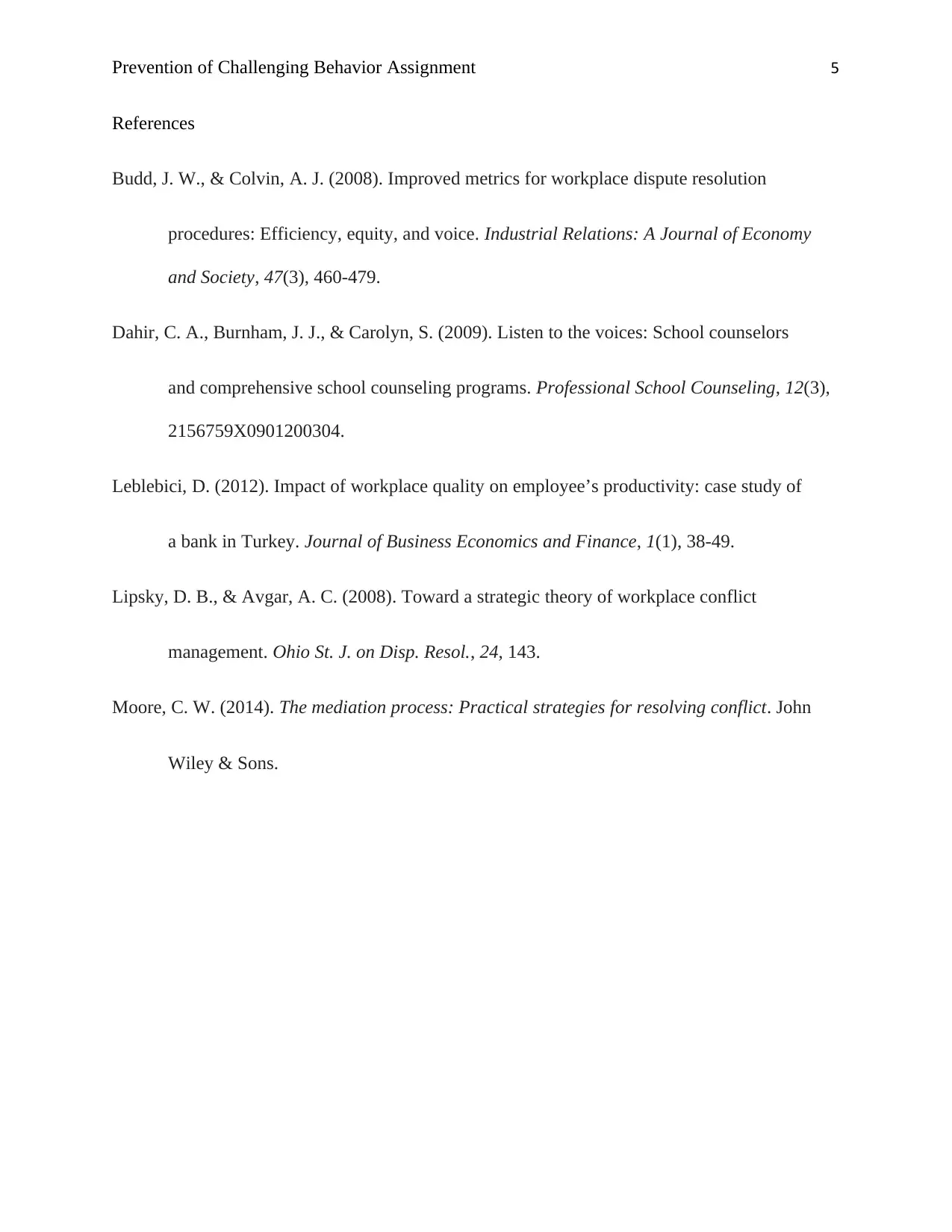Prevention of Challenging Behavior Assignment - Desklib
VerifiedAdded on 2023/06/05
|5
|1057
|281
AI Summary
This article discusses strategies to prevent challenging behavior in the workplace, using the example of Peter. It covers creating rules, using modeling, providing practical guidance, modifying the environment, and de-escalation techniques. References are also provided.
Contribute Materials
Your contribution can guide someone’s learning journey. Share your
documents today.
1 out of 5
![[object Object]](/_next/static/media/star-bottom.7253800d.svg)
